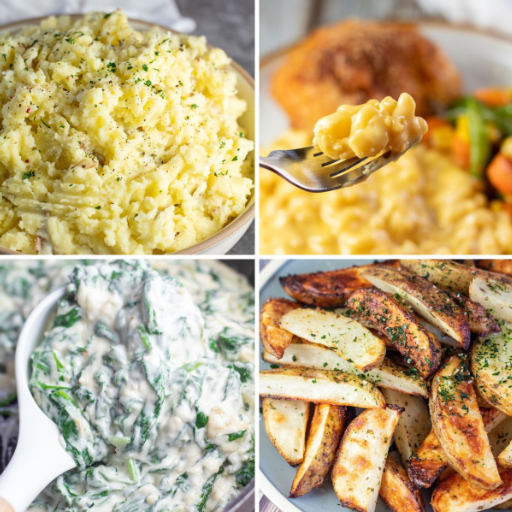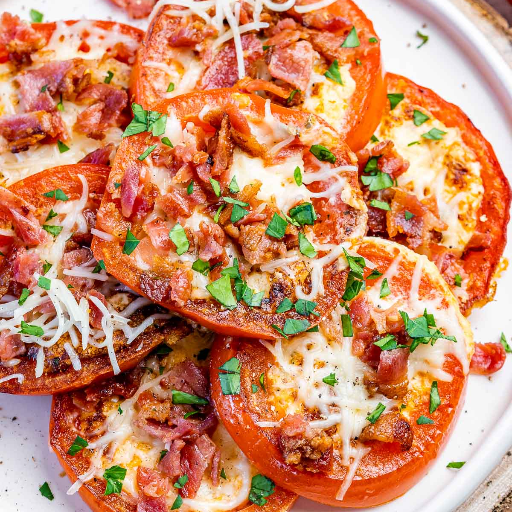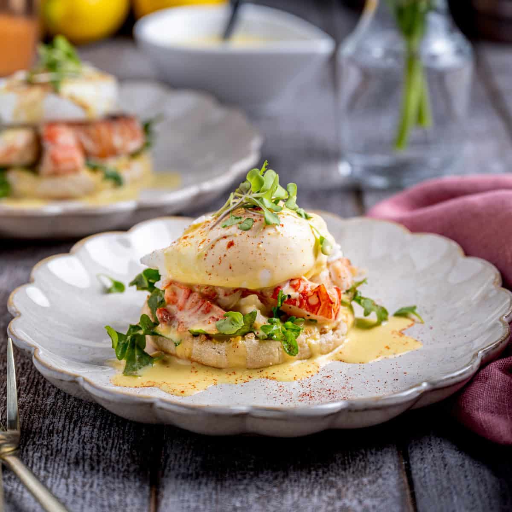Welcome to our culinary place where we discover and admire the beauty of making scrumptious meals. Today, let us explore the wonderful world of casseroles and, more narrowly, a Swiss Chicken Casserole, a favorite of many. This easy and cheesy recipe includes chicken, swiss cheese, and various other ingredients to make a proper meal. It does not matter if you are a pro or just learning to cook, the recipe has been made that it is uncomplicated but elegant at the same time which makes it applicable for family or when one is hosting. As you proceed with this recipe, we will present you with appropriate guidelines on how this casserole should be made, ensuring that everybody can get the taste of the warmth and flavor in the casserole all the time.
What Ingredients Do I Need for a Swiss Chicken Bake?
Essential Ingredients for Swiss Chicken
So as to prepare this Swiss Chicken Bake, the following ingredient solenoids encourage its preparation: boneless chicken beef, sliced Swiss cheese, and a can of cream of chicken soup. In addition, milk, butter, and breadcrumbs are also required to make the crisp golden topping. These ingredients complement one another quite well leaving the dish luscious and reassuring. The ease with which one can prepare this dish is such that even if one is out of time, there is no hindrance in bringing these sustenance together for a palatable meal.
Using Swiss Cheese in Your Recipe
At the time of preparing swiss cheese, a fundamental understanding of how to use this type of cheese in the recipe and its contribution is mandatory. Swiss cheese readily has a reputation for having a nutty flavor and being easy to melt, hence its suitability in casseroles. The cheese is often cut into slices or shredded to spread evenly across the dish. The consensus, as provided by reputable cooking platforms, concurs that the cheese must be natural Swiss cheese rather than any processed cheese.
Swiss cheese has impressive technical parameters. Its melting point lies between 130°F and 150°F (54°C and 66°C) and hence melts evenly without oiling. Its moisture content is around 37%- 44%, giving the casserole a creamy texture. To balance the flavor, put a piece of cheese directly over the chicken breasts and pour the soup above the cheese. This technique of layering promotes the penetration of the cheese during formulation as the cheese blends with other components in the oven.
Substitutes for Cream of Mushroom Soup
During my web search for websites, I discovered numerous worthwhile alternatives for the cream of mushroom soup, for instance, those used for sauces that stay thick while producing a creamy flavor. First of all, mix with representational sauce, i.e., milk or heavy cream with (butter and flour) to create a thick base for homemade gravies. You could add in sautéed onions and garlic and some mushrooms if you want to be chopped up, replicating the flavor almost perfectly to that of the canned product. In detail, this technique gives you some control over how thick the mixture gets by adjusting the ratio of butter and flour in the roux, commonly about one-to-one.
In addition, a special combination of sour cream and vegetable broth creates creaminess with some zest. This change goes well if you do not want to be far off from the original flavors. Finally, mix Greek yogurt with chicken stock to create a simple ingredient ideal for the soup if you prefer a thinner consistency. All of these alternatives provide options and can be selected considering one’s dietary habits while maintaining the balanced and appetizing nature of the dish.
How to Prepare the Swiss Chicken Casserole?
Step by step direction of the Baked Swiss Chicken Recipe.
I have gone through the pages on the web, to simplify the preparation stages of Baked Swiss Chicken, in the same way, make it easy to understand. Allow me to take you through it:
- Pre-cook Steps: Initially, the oven should be set to 350 F, or 175 C. As the oven is being heated, I apply a thin oil film onto a baking pan to avoid food items sticking onto surfaces.
- Add constituents on the dish: After coating with Swiss cheese pieces, the dishes prepared for roasting chicken breasts are scooped evenly around the variety of chicken within. After that, I place a piece of Swiss cheese on each.
- Mix Sauce: After mixing the cream of chicken soup, about 1/4 cup of white wine, or about 1/4 cup, is added for taste. It is best to taste and adjust the quantity based on your cooking preferences.
- Drip Pour Cover: In the last part, I pace this Worcester mix-up over the layers of chicken and cheese, trying to level as best as possible.
- Cover with bread crumbs: Bread crumbs, about one cup in size, are lightly sprinkled to the soup layer as it provides a nice crunch to finish off the cooking.
- Add Butter: Finally, about a quarter cup of melted butter is poured over the bread crumbs to enhance browning.
- Bake: I pour the dish into an oven and let it cook for 45 to 50 minutes. This ensures that the chicken is done all the way through and forms a nicely browned and bubbling top.
All the steps come from proven and practiced techniques of culinary specialists with focus on accurate proportions and amount of preparation for the best quality. This cookery may be improved in a way, allowing varying amounts of spices to be used as desired.
A Beginner’s Guide to Cooking Chicken Breast
Cooking a chicken breast seemed a difficult task in the beginning, but according to some of the best sources I found online, there are some things that I have to consider that will leave me with juicy and appetizing chicken breast. First and foremost, I always check how thick the chicken breasts are; if they are thicker on one side, I place the chicken breast’s thicker end over the thinner end using a meat mallet to be evenly thick. Chicken cannot be cooked with the chicken breasts before it is cooked. I add a generous amount of salt and pepper and other spices I like. In the end, I turn on my cravings and let them out up to medium-high while some oil heats up. It is important to cover the chicken so it has time to develop its golden crust without moving it while it is in the hot oil. You sear the chicken for around 6-7 minutes after which you flip the breasts and lower the heat to medium while placing a lid over the skillet to prevent heat and moisture from escaping the skillet. When I look at the chicken, it appears that it has been about 6 minutes, so I turn the timer on to depict how long the inside meat should be cooked. After cooking, the thick and juicy pieces of chicken are warm, and with some patience, we can cut them after they have rested for a few minutes, allowing all of the juices to redistribute, causing one of the tastiest parts of the chicken to be the meat itself.
How to make a creamy dish
Whereas people have varying preferences, it is quite interesting how, in a creamy dish, the greater portion of people’s taste buds seems to focus on deliciousness and comfort. Therefore, there is galvanization in the endeavor. This is what I do: always try to be on the lookout for key tips, many offered by famous chefs or chefs whose great-grandfathers were also chefs – in short, there is no lack of sources. Among the key tips rather than sprightly boiling the milk substance with the ingredients, a more convenient option is to watch gentle and steady meatboiling action. Even when the full-bodied long-leafed milk and cream gets curdled, instead of calling it the end of the dish, it can’t possibly happen; instead, there are tactics to deal with it whereby the roux (butter and flour equally combined in needed amounts) is placed at the beginning and as the other flavors combine in. Other components are combined with this so that the dispersion of oil intermingles and, ideally, more than the substance produces the average thickness. In the endand at last, a mild splatter of lemon juice or vinegar always works best to cut through the resisted richness which last sip had or was hoping for.
Can I Make This Recipe Ahead of Time?
The Finest Tips to Prepare Swiss Chicken for the Freezer
There are some tips which, when followed, will add taste to the freezing process of Swiss Chicken so that it can be enjoyed later. For first example, it is important to let the dish come to room temperature and freeze it only when it has completely cooled. Otherwise, ice crystals will form, eventually leading to a freezer burn. Chicken should be stored in either an airtight container or a heavy-duty freezer bag, which is often advised. If as much air as possible is taken out, then the dish has a shelf life of three months and above without losing its quality.
Writing the date and the contents of each container on it while freezing will help you know how long you have stored things. Even when rigorously cooking the chicken, it’s important to stabilize its internal temperature at over 165 degrees Fahrenheit (74 degrees Celsius), which can be checked with a posture thermometer. Placing the chicken in the refrigerator overnight will help to soak it in the refrigerator partially. This is done slowly so that the chances of bacteria growing are reduced. If you want to defrost a chicken quickly, use the microwave’s defrost capability or put it in a sealed bag and submerge it in a bowl of cold water. Adherence to these steps, borrowed from best practices in leading cooking portals, helps in making good food which is also safe after freezing.
Resurrection Stands for the Process of Reheating the Chicken Casserole
Regarding the chicken casserole, reheating it is quite simple and becomes a success with a few basic steps. First, I switch on my oven and allow it to get hot to an optimal temperature of 350 degrees Fahrenheit or 175 degrees Celsius. Then, I put the casserole covered as such into an oven dish to retain moisture and so that the dish is heated thoroughly in about 20 to 30 minutes. However, I like to ensure that the temperature of the dish has reached 165 degrees Fahrenheit or 74 degrees Celsius as per the guidelines provided to all food through a food thermometer. In case I am doing something else and am short of time, reheating through a microwave is also an option, as focusing the microwave-safe dish cover’s melting point helps trap steam. Then I microwave the dish on medium power, allowing the covered dish to rest intermittently, focusing on ensuring that I rotate the dish to get even reheating across the casserole. Following these quick and simple tips helps in ensuring the casserole’s exquisite creaminess.
What are the best sides to serve Swiss chicken?
Combining Swiss Chicken with Mashed Potatoes and More
With Swiss Chicken being served, I think i will serve mashed potatoes since these are the ideal accompaniment which provide a creamy, comforting mouthful to the savory notes of the dish. To counterbalance the meat, it is possible to serve steamed green beans or a side salad, bringing in the crunch and the color. Chopped carrots or Brussels sprouts are roasted vegetables that add sweetness to the Swiss cheese in the chicken. Such ideas, which can be found on culinary web pages, please the overall plate balance, round the meal, and are quite appetizing.
Salads Which Go With The Swiss Chicken
Drawing from online culinary experts, Swiss Chicken being chicken cooked with Swiss cheese, I found out that it’s best served with a fresh tossed mixed greens salad dressed with a light vinaigrette, which compliments the chicken as well. A Caesar salad also goes very well with the Swiss Chicken, the crisp romaine lettuce and cream dressing offer a rich texture contrast to the dish. The sweetness can also be derived from a spinach and strawberry salad drizzled with a balsamic glaze for a twist. The meal presents a new taste and appearance with such salad choices to add nutritional balance, pleasing both the eyes and the taste buds.
Can I Use Different Types of Cheese in This Recipe?
Possible Substitutes for Swiss Cheese
Among the options, my strongest recommendation would be Gruyere, as it has a similar taste with a creamy texture that is nutty rather than sharp. Gruyere has melting qualities similar to Swiss cheese, making it an ideal option. Another option would be Fontina, which tastes mildly and melts well. Those looking for a distinct sharp flavor mixed with good melt may choose Provolone. All these cheeses have the basic properties required for successful dish execution, like melting point and consistency; hence, the characteristics of taste or texture of the Swiss Chicken dish are not compromised.
Combining Cheeses for Greater Depth of Flavour
In my Swiss Chicken recipe, I combine the cheeses that enhance the individual flavors without creating competition. The best way to use Italian cheeses is to thoroughly and intricately introduce parma cheese with Gruyere together as they add great flavors and umami without sacrificing creaminess. Gruyère provides a nutty flavor, whereas parmesan brings in seawater flavor in smaller proportions. It follows then that Gruyère is a soft cheese with high moisture and fat content; Parmesan, a more solid cheese, tastes very strong but does not melt easily. Another great combination that works is when layering Fontina with Mozzarella, where the blissfully malleable Mozzarella bonds with the buttery texture of Fontina to create an addictive cheesy flavor without losing great creamy mouth feel. These pairings does not modify the original composition of the dish, in fact they enhance the dish.
What Are Some Variations of This Swiss Chicken Recipe?
Making a Casserole with Mushrooms Instead
In order to make a mushroom variation of the Swiss Chicken casserole, I begin by adding in some fresh mushrooms into the dish as it enhances the flavor. I generally take about 1 cup of cremini or button mushrooms, slice them up, and saute them with onions and garlic till they are soft, which is a good start for the casserole. Thereafter, I proceed with my regular chicken-boiled casserole and make room for cheese, using a blend of Gruyère with Mozzarella cheese to make up for the umami taste of the mushrooms. To maintain needed moisture and flavor for the casserole, a touch of wine, white wine or chicken broth is added when layering the ingredients. Lastly, once the dish is assembled, it is baked until it is bubbly and golden. This completely changes the way Swiss chicken is made.
Enhancing Nutrition with Vegetables
While preparing the Swiss Chicken casserole, I consider adding other vegetables such as zucchini, carrot, and cauliflower to be quite healthy and add an aesthetic touch to the dish. I go for bell peppers, broccoli and spinach because they are rich in vitamins and fiber and provide color to the dish. I usually have these vegetables chopped and stir-fried for some time before adding them to the chicken and cheese layers. This technique adds more value to the dish as it adds vegetables, flavors, and aroma. Moreover, any baked dish requires ensuring the ingredients are cooked well enough, and this is important to ensure that the flavors and the vitality of the vegetables remain intact to make the casserole nutritious and fulfilling.“
How to Make a Spicy Swiss Chicken Bake
While spicing my Swiss Chicken bake, my first phase is choosing the right spices to complement the heat with flavor. The popular recipes available on the internet, however, suggest ingredients such as cayenne pepper, red pepper flakes, and hot sauce to add quite a bit of heat to the dish. In my case, I like to rub spices over the chicken so that the seasoning has infiltrated the chicken meat thoroughly.
Moving on, I need to keep the dish. As such, sauce will be added to the dish, which consists of chicken broth with some spicy additive, such as spicy mustard or just an extra dash of hot sauce. To provide the baking’s spicy flavor, I combine the spicy sauce with cheese, using a stronger proportion of meltable Gruyere and pepper jack cheese.
Incorporating a technique from top recipes, onions and garlic can be first sautéed in olive oil and then incorporated into the casserole for depth of flavor. After assembling the dish, it needs to be baked at approximately 375°F (190°C) for 25 – 30 minutes for the dish and cheese to become well done and slightly golden.
As with all spicy food, it is advisable to start with some spices and adjust according to individual tolerances. This way, it is possible to have Swiss Chicken bake- fiery irresistible comfort food for those who need that extra kick.
Reference sources
Frequently Asked Questions (FAQs)
Q: What ingredients do I need for the Swiss chicken recipe?
A: The Swiss chicken recipe calls for just 6 ingredients, including chicken breasts, Swiss cheese, dry stuffing mix, melted butter, and a creamy sauce. It’s an easy recipe perfect for a weeknight dinner.
Q: How do I prepare the chicken for the Swiss chicken recipe?
A: To prepare the chicken, place chicken breasts in a baking dish, pour over chicken a creamy sauce made with melted butter, and top with Swiss cheese on top of the chicken. Then sprinkle the dry stuffing mix over everything.
Q: What temperature should I set the oven to for baking the Swiss chicken?
A: Preheat your oven to 350 degrees Fahrenheit. This temperature is ideal for cooking the chicken in the oven until tender.
Q: How long do I need to bake the Swiss chicken?
A: Bake the Swiss chicken uncovered for about 30-40 minutes, or until thoroughly cooked and tender. Always ensure that the internal temperature reaches 165 degrees Fahrenheit.
Q: Can I use frozen chicken for the Swiss chicken recipe?
A: While you can use frozen chicken, it’s best to thaw it first to ensure even cooking. Cooking frozen chicken may result in longer baking times, affecting the overall tenderness.
Q: What can I serve with the Swiss chicken?
A: Swiss chicken pairs well with various sides, such as steamed vegetables or a simple noodle dish. For a complete meal, consider making a side salad.
Q: Is there a way to modify the Swiss chicken recipe?
A: Yes, you can modify the recipe by using different types of cheese or adding spices to the stuffing mix for added flavor. You can also include vegetables in the baking dish for an easy meal.
Q: Where can I find more recipes like the Swiss chicken recipe?
A: You can find more recipes by checking cookbooks, food blogs, or sites like Real Mom Kitchen, which often share tasty and easy dinner ideas.
Q: How can I make this Swiss chicken recipe more delicious?
A: To enhance the flavor, you can crush croutons or add sliced mushrooms for extra texture. A mixture of herbs can also elevate the taste of this easy recipe.
Q: How do I recommend the Swiss chicken recipe to others?
A: If you loved this recipe, you can reply to your friends or family about how easy it is to make and share your experience with the creamy sauce and tender chicken, encouraging them to try it for themselves!
















